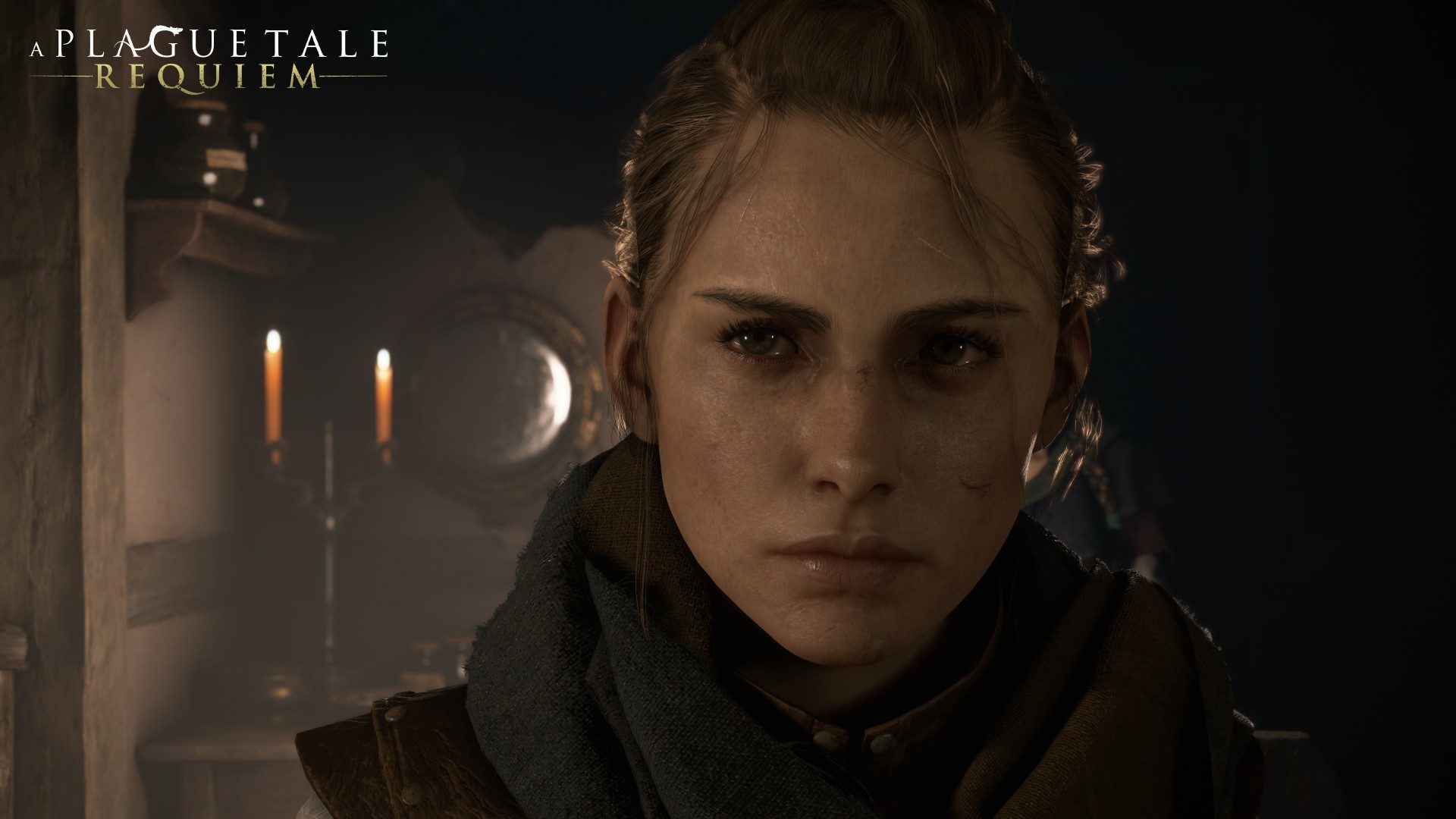SUMMARY
This is AI generated summarization, which may have errors. For context, always refer to the full article.

(Disclosure: A PlayStation 5 review code was provided by the publisher.)
MANILA, Philippines – A Plague Tale: Requiem, the sequel to 2019’s Plague Tale: Innocence, takes players back to plague-tormented France in the 1300s. Amicia de Rune, the sling-toting heroine of the first game, returns with her brother Hugo, whose mysterious affliction appears to bring the tsunami of plague-carrying, man-eating rats wherever he goes.
In Requiem, they find a peaceful town seemingly unaffected by the plague. But the calm doesn’t last for long, as the rats and the sickness catch up quickly, and the siblings’ nightmare starts over again. Hugo, in his dreams, sees an island promising a cure to his condition, and it is this fantastical hope that fuels Amicia, Hugo and their cohorts’ journey in Requiem.
There’s almost a Last of Us flavor to the proceedings, except you’re sent way back to the middle ages.
This must’ve been a medieval person’s idea of what the apocalypse is, and instead of hordes of the undead, you have hordes of rats. As in the first game, the rats are among the core antagonists of the game, although there are indeed mystical forces influencing the said vermin.

The rats are also a core part of the levels and the gameplay. The player navigates set stages surrounded by both rats and patrolling guards. The player must stay in well-lit portions or face instant death from the rats. There are various ways to deal with the them such as distracting them by dropping a cow carcass hanging from a hook or perhaps, more satisfyingly, by putting out a guard’s torch thus allowing the rats to eat them while you sneak away.
Amicia’s main weapon is a sling, whose ammo can be tweaked with various chemicals to trigger certain effects such as lighting torches, putting out fires or making an even bigger fire – all to navigate through the ferocious critters.

While the rats look disgusting, they are not always that challenging to deal with, as do the puzzles whose solutions are often just a matter of finding the right item or trigger within the environment. What adds to the challenge is staying hidden from the patrolling guards, and figuring out their walking patterns. Amicia dies in just two hits, and often, will not be able to deal with more than one soldier at a time. It’s more of a stealth game than anything, with Amicia – although very dangerous with the sling – not exactly a grizzled soldier who can go toe-to-toe with most of these foes, and must rely on cunning.
Later on, Hugo’s rat-controlling powers – revealed in the first game – would become accessible, adding variety to how you can deal with the levels, the soldiers, and the rats as well. Beyond the gameplay, it feels cool to have the rats as both your weapon, and an adversary at the same time.
The controls take some time to getting used to, but once you do, it’s easy to scroll through weapons, alchemical ammo types, or craft ammo through the directional buttons. During more intense times, you can select weapons more deliberately through the R1 button, which slows down the action as you make your pick.
Requiem also makes use of an auto skill leveling system depending on whether you’ve been stealthy, aggressive, or have been making use of the alchemical weapons frequently. It keeps the gameplay fresh, and gives you new ways of dealing with enemies such as being able to push a soldier into a fire or into the rats.
In a way, navigating the stages feels like how one would navigate stages laden with zombies and soldiers to get from door A to door B in The Last of Us, scavenging for scraps and resources along the way, avoiding hard-to-kill enemies, and upgrading your character through a workbench. But, with different elements such as the sling, Hugo’s rat powers, and alchemy options, Requiem also does more than enough to be its own game.
Levels also feel perfectly sized, and lends to good pacing.
If you haven’t played the first game though, it’ll take you about a few hours into the game before you start to
The apocalypse, medieval style
Unless you have a phobia of rats though, The Last of Us is closer to blood-curdling horror than Requiem. Requiem is unique though in that it is able to depict what city-wide destruction looks like in the medieval era, with entire castles crumbling to a torrent of rats like New York City in a modern disaster flick.
Requiem shows the despair of a world prior to the magic of modern medicine. But what is most memorable is its incredibly gruesome depiction of death, standing in stark contrast to the beautiful towns before they are laid to waste, and Asobo Studio’s loving rendition of medieval France’s natural landscape. Even desensitized gamers might take a little pause as you can almost smell the scenes.
Through the death and destruction, Amicia’s heart and resolve – all for the sake of a brother she’s only grown closer to in their trying times – are a beacon of hope. Amicia, as mentioned above, isn’t a born killer – again, almost reminding me of Ellie from The Last of Us who had to learn how to resort to unpleasant means – and her vulnerability makes her instantly relatable. On the side, Amicia can collect trinkets such as flowers – which Amicia’s brother is known to be fond of – and bird feathers, or anything that the siblings might find special, which adds tenderness and poignancy in Requiem‘s ravaged world.

While the sibling dynamic is the core of the narrative, Amicia herself has her own character journey, reflecting too on her choices in dealing with adversaries, and how to stop herself from just giving in to white hot rage, or her brother from doing the same. The developers and voice actors also did an amazing job bringing the characters to life, especially during the in-game cut scenes.
One technical issue is that there is some occasional slowdown though in some scenes during the gameplay. It’s distracting enough but not game-breaking.
Overall, Requiem’s core gameplay loop isn’t novel but has enough personality; it’s the characters though, and the sufficiently life-or-death tribulations they’re put through, that will make you want to see things through to the end. – Rappler.com
Add a comment
How does this make you feel?





There are no comments yet. Add your comment to start the conversation.